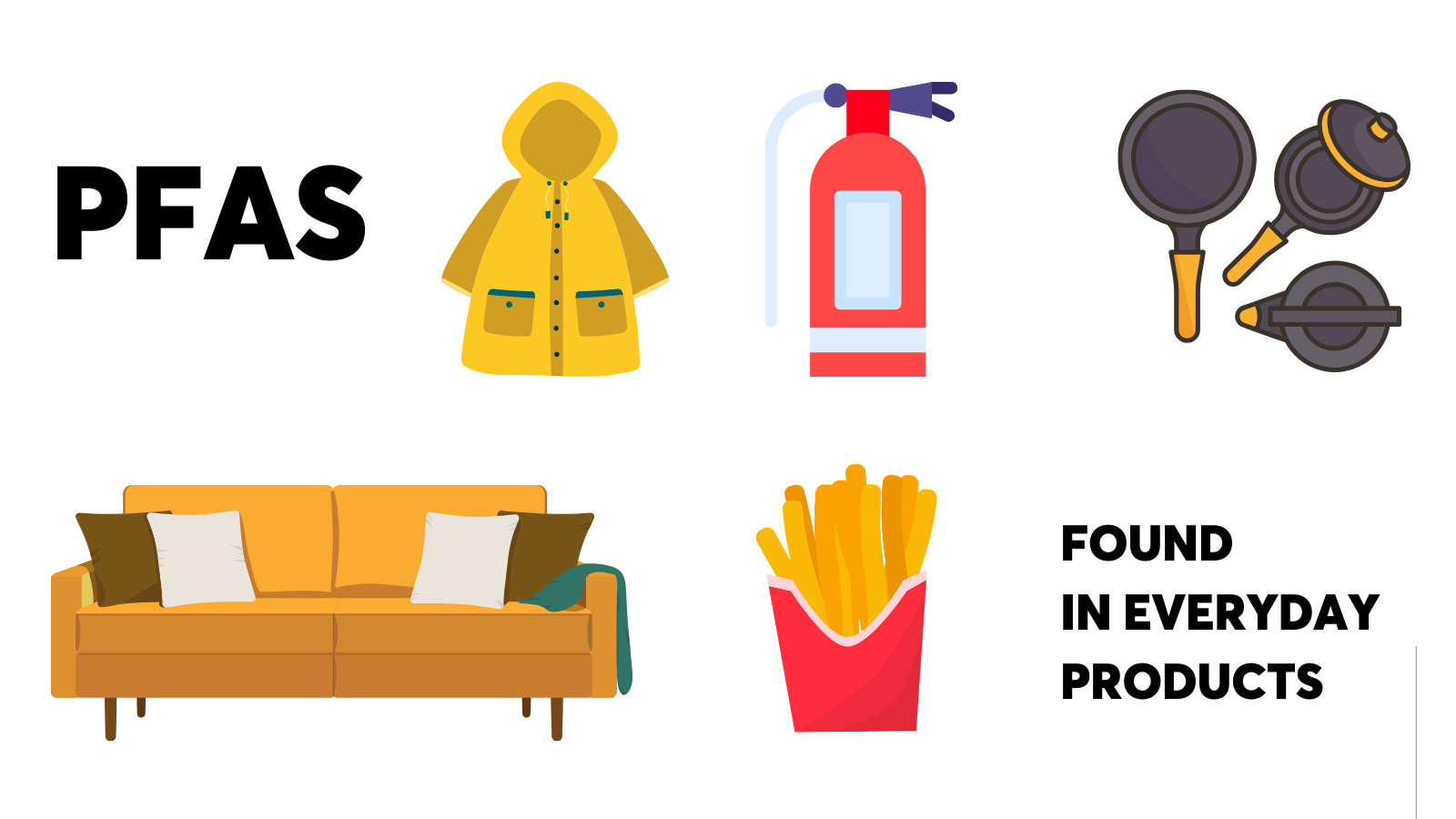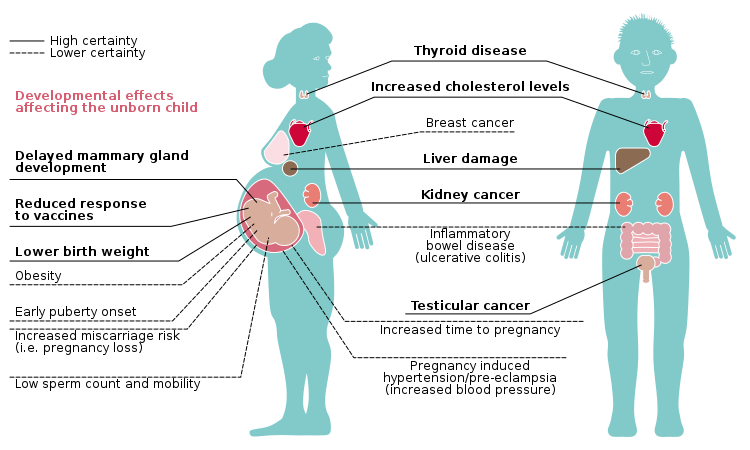


Poly- and perfluoroalkyl substances (PFAS), also known as forever chemicals, have been used in industry and consumer products worldwide since the 1940s, due to their water and grease-resistant properties, introducing a “better living through chemistry”. They are present in everyday applications, ranging from fire-fighting foam, nonstick cookware, food packaging, and waterproof and stain-resistant clothing, to cleaning products, paints, and much more. They have been making our lives easier and less messy, but this convenience came at a substantial cost.
PFAS are a group of more than 4,700 synthetic chemicals, consisting of a fully (per) or partly (poly) fluorinated carbon chain connected to different functional groups, rendering them highly resistant to heat, water, and oil. They are also called forever chemicals because they are extremely persistent and break down very slowly over time.
Polyfluorinated PFAS contain both fluoro-carbon and hydro-carbon segments. These hydro-carbon portions in polyfluorinated PFASs can degrade over time, ultimately leading to the formation of perfluorinated PFAS acids like perfluorooctanoic acid (PFOA) and perfluorooctanesulfonic acid (PFOS).
Based on the length of the fluorinated carbon chain, short and long-chain PFAS can be distinguished. The length of the fluorinated carbon chain can result in different physicochemical properties that influence the behavior of these substances in both environmental settings and living organisms, playing a significant role in their bioaccumulation and ecological toxicity.
Long-chain PFAS compounds tend to accumulate within the bodies of humans, animals, and sediment or soil. In contrast, short-chain PFAS compounds primarily accumulate in the environment due to their persistent nature and high mobility in air and water [1].
Unfortunately, PFAS are almost impossible to avoid. We are constantly exposed to hundreds of PFAS through contaminated water, food, and air, as well as via countless products that we use in everyday life. They accumulate in our tissue and due to hydrophobicity and enzymatic stability the human body excretes them very slowly. In nature, forever chemicals are found in organisms at sea and on land, creating higher concentrations as they move up the food chain.
PFAS are considered moderately to highly toxic and scientists are still figuring out what risks they pose to public health. New studies point to myriad health impacts including liver damage, thyroid disease, obesity, fertility issues, and cancer, while they have been associated with delayed children’s development [2].
Recent studies provided strong evidence that forever chemicals can alter the immune system, affecting the ability to fight a disease or respond to a vaccine. Due to the urgency of the coronavirus disease 2019 (COVID-19) pandemic, researchers focused on better understanding how PFAS affects coronavirus and other infectious diseases. However, the situation is still foggy since scientists don’t know the toxicity levels of most PFAS, and little is known about the mechanics of how these substances may interact to affect immune health [3].

Credit: European Environment Agency, Wikimedia Creative Commons
So far, regulation on an EU level is in force only for a few PFAS chemicals. Since 2009, perfluorooctane sulfonic acid and its derivatives (PFOS) have been included in the international Stockholm Convention to eliminate their use. PFOS have been restricted in the EU for more than 10 years already, under the EU’s Persistent Organic Pollutants (POPs) Regulation.
In February 2023, a restriction covering about 200 PFAS came into force. This restriction covers PFAS of a specific molecular chain length (C9-14). There are also restriction proposals for the PFAS chemicals PFHxA and PFHxS as well as chemicals that degrade into these.
ECHA, the European Chemicals Agency, is evaluating a proposal by five European countries to restrict all PFAS and has proposed a gradual ban on these chemicals in firefighting foams.
The national authorities of Germany, Denmark, the Netherlands, Norway, and Sweden are proposing a restriction covering a wide range of PFAS uses, which will now be discussed over a couple of years until it is expected to come into force in 2025 or 2026 [4].
Avoiding exposure to PFASs can be difficult but there are some steps you can take to protect yourself.
1. Filter your drinking water
One of the most significant sources of PFAS exposure is through contaminated drinking water. Consider investing in a high-quality water filtration system that specifically targets PFAS compounds. Filters containing activated carbon or reverse osmosis membranes have been shown to be effective at removing PFAS from water supplies.
2. Mind your cookware and food packaging
Replace non-stick cookware with stainless steel, glass, cast iron, or ceramic alternatives. Avoid using microwaveable popcorn bags and takeout containers that may have PFAS coatings. Choose glass, stainless steel, or food-grade silicone containers for storing food.
3. Choose PFAS-free products
Check product labels and choose items that are certified as PFAS-free. Many manufacturers now produce PFAS-free cookware, textiles, and food packaging. When shopping for products like carpets, furniture, or clothing, inquire about PFAS content and seek alternatives that do not contain these harmful compounds.
4. Reduce consumption of fast food
Studies have shown that fast food wrappers and containers are often treated with PFAS compounds to resist grease and moisture. Limiting your consumption of fast food can reduce your exposure to these chemicals.
Conclusion
Research has made it clear that there is a wide range of health and environmental risks associated with PFASs. In the next decade, the regulatory landscape and the shift in consumer preferences will put more pressure on companies to reevaluate their production methods to achieve product quality while applying health and environmental safeguards. Scientists are also working on finding efficient ways to break down PFASs. Is there a magical solution, a “silver bullet” that can free us from forever chemicals? No, but hopefully we are moving in the right direction.
References:
3. Beans C. (2021), News Feature: How "forever chemicals" might impair the immune system. Proc Natl Acad Sci U S A. Apr 13;118(15):e2105018118. DOI: 10.1073/pnas.2105018118. PMID: 33833063; PMCID: PMC8054019.
4. https://echa.europa.eu/hot-topics/perfluoroalkyl-chemicals-pfas
△